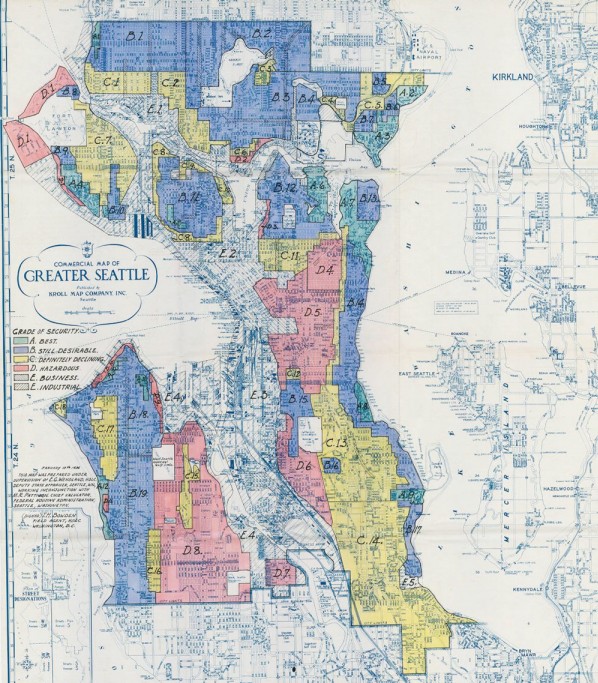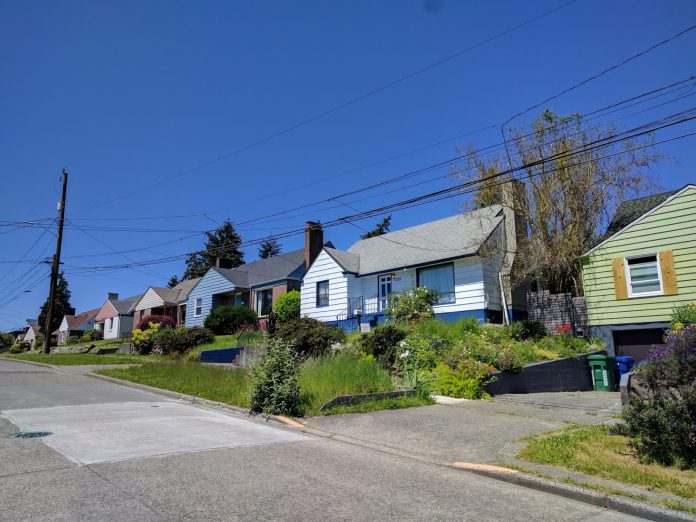Yesterday’s report that Seattle’s housing prices rose 11.6% over where they were in November 2019 comes as zero surprise to anyone who has toyed with the idea of buying a house in the last year. Folks are hunkering down and fixing up. That extra room is an office and that kitchen got an upgrade, if you had them already. Without being tied to a workplace or a commute, white collar workers are finding that they can live where they want. Just as many people are making that home in the city as are departing to the suburbs. The housing market is as tight as it has been in the last 20 years.
Which means that Seattle is still in a housing crunch. On top of the existing statewide shortage estimated at 225,000 units, the region needs to build capacity for at least one and a half million new residents. Some projections put this deadline at 2050, but it’s going to be needed much sooner based on climate migration studies.
There are proposals for density under glamor names like “the 15-minute city” which many other places just call “the city.” Others develop wacky concepts that insist the incoming population needs to be focused into new “hub cities” in underdeveloped areas along I-5. Then there’s a concept many label as a simple solution to the affordability and supply problem: Upzoning. It is the go-to for many urbanists every time there is a report about unavailable housing. Or unaffordable housing. Or that the baseball team lost. Or just a random Tuesday. We love upzones.
The idea of upzoning is straightforward. If there is a density limit in the zoning code, turn it up a notch or two. That was the concept behind the Mandatory Housing Affordability (MHA) law that Seattle passed in 2019. MHA identified areas in the city to increase floor area and the number of permitted stories in new buildings. In exchange, developers provided a certain number of affordable units (ranging from 3% to 11%) or paid a fee, each scaled to the intensity of the zoning capacity increase. The measure faced fierce opposition.
Upzoning is appealing because it reverses decades of apartment bans and cloistered McMansion development. But it has a giant problem beyond the political firestorm that often surrounds it. Upzoning without the accompaniment of deeper reforms reinforces the underlying failures of zoning.
First, we cannot escape the racist roots of zoning in the United States. As Richard Rothstein puts it in The Color of Law, “segregationist officials faced two distinct problems” in the early 20th century, “how to keep lower-income African Americans from living near middle-class whites and how to keep middle class African Americans from buying into white middle-class neighborhoods.” Zoning ordinances were developed to build homes that outpriced all lower classes. Applying that zoning preserved White neighborhoods and dumped unwanted uses in Black communities, undermining the potential wealth generation of home ownership.

This persisted until the Federal Government set up the Home Ownership Lending Corporation and simply excluded Blacks from qualifying for home loans. The HLOC maps of the 1930’s “redlined” non-White neighborhoods, later justifying highways and industrial areas to cut through them. Those old maps are so closely tied to our modern city that the redlined areas overlap where Covid cases are concentrated today.
Second, we make zoning carry too much weight today. Take this week’s decision by exiting Mayor Jenny Durkan to reduce the number of gas appliances in the city. Such a move is an objective victory. The city is using its authority over building codes to rein in the sources of carbon emissions. But the new rules exclude single-family homes and applies only to commercial or mixed-use projects. That means the gas appliance rule ends up being a zoning rule.
Over and over, we get these inadvertent zoning rules, simply by making them only apply to one type of building. MHA was primarily designated for multifamily homes. Design review is required for commercial and multifamily developments. Industrial areas get churned by being planned, scrutinized, and re-studied. Even the most needed housing for those surviving outside is subjected to zoning nonsense because it’s about the use of a building. While we could be using five-year-old emergency powers to build or lease thousands of units tomorrow, actually providing housing has been allowed to fall back on the polite bureaucratic sausage making of a zoning discussion. In Renton, hostile zoning to disperse those experiencing homelessness has advanced straight through farce to high art. This is what peak performance of suburban municipalities looks like.
All the while, single-family detached areas are largely exempt from these processes.
Zoning is not the only way we divide up the city, but it does so much more work than the other divisions we make. Neighborhood names change based on what a realtor wants to sell a house for. There are option schools and redistricting. Census tracts and zip codes move around with the population. Police precincts follow the perceived need for services. Only the land use code gets saddled with establishing the heights, setbacks, uses, exclusions, signage, parking, trash location, public outreach process, economic composition, access from public right-of-ways, in addition to protecting the “character,” setting the walkability, services, employment conditions, landscaping, and generally making a neighborhood a PLACE.
There is no way that a piece of legislation can do all of those things. Yet we expect zoning to pull it off. Most people don’t even understand zoning, but we let it dictate so much of our communities. More disastrously, we expect zoning to be successful in every part of the city for every activity in the city. When it fails—and it always fails—zoning reverts back to its original state of segregation by race and wealth.
So, let’s step back from upzoning for a little bit. Zoning will never be able to create enough new housing because it was never designed to. We need a deep understanding of all the places polluted by zoning’s exclusionary, racist history and the courage to rip it out by the roots. Until we get that done, we must put the polite spectacle of zoning decisions on the side and use every other tool to zealously pursue housing, housing, and more housing.
Ray Dubicki is a stay-at-home dad and parent-on-call for taking care of general school and neighborhood tasks around Ballard. This lets him see how urbanism works (or doesn’t) during the hours most people are locked in their office. He is an attorney and urbanist by training, with soup-to-nuts planning experience from code enforcement to university development to writing zoning ordinances. He enjoys using PowerPoint, but only because it’s no longer a weekly obligation.


